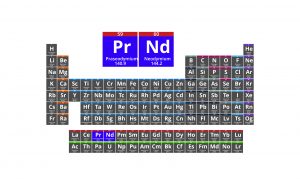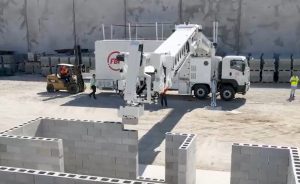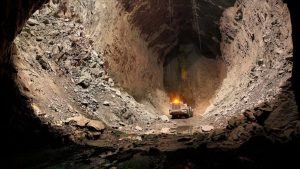It is sometimes difficult to distinguish between fact and fiction when a personality like Elon Musk tells shareholders his Tesla company may invest in mining to handle an expected looming shortage of key battery components such as nickel.
Musk’s comments, at Tesla’s AGM in June, attracted sniggers from the usual critics weary of the entrepreneur’s penchant for self-promotion.
But his comments also added to a growing list of voices expressing concern about the impact the electric vehicle boom will have on the supply of some of its most important metals and minerals.
Nickel tops the list of the “endangered” species as far as battery components go if the EV growth forecasts are to be believed.
Not surprisingly, ASX-focused investors are increasingly turning their attention to West Australian explorer St George Mining (ASX: SGQ).
This week a clearer picture emerged of the prospectivity of St George’s Mt Alexander project near Leonora in the Goldfields region, not far from BHP’s Nickel West mines.
Radar, a fourth nickel sulphide discovery at Mt Alexander, was confirmed when St George released details of the maiden hole’s assays. Best hits included 6m at 2.14% nickel, 0.74% copper and 1.62 grams per tonne platinum group metals from a shallow depth of just 46m.
Drilling of step-out holes at Radar is underway as St George tries to get a handle on what Radar may look like and how it compares to Mt Alexander’s three other nearby discoveries – Stricklands, Cathedrals and Investigators.
“With high-grade mineralisation now established over a 5.5km strike of the east-west oriented Cathedrals Belt, we are increasingly confident of the potential to develop a potential mining operation at the project,” St George executive chairman John Prineas told investors on Wednesday.
The accompanying news by St George that early stage scoping study works were underway prompted Argonaut analysts Matthew Keane and James Wilson to speculate that the mineral inventory discovered so far at Mt Alexander could tally up to 50,000 tonnes of contained nickel equivalent.
“Given that all four mineralised prospects commence within 50m of surface, there is potential for numerous small open pits,” Keane and Wilson wrote in a note to Argonaut clients.
“The competent nature of the granite country rock means that pit walls could be designed at steep angles, reducing strip ratios.
“We believe mineralisation could either support a small on-site wash plant or tolling to a number of processing facilities within trucking distance, including Sinclair (Saracen Mineral Holdings), Cosmos (Western Areas) or Leinster (BHP).”
St George is keeping its powder dry for now and focusing on further testing the potential across Mt Alexander before calculating a maiden resource.
But astute investors are turning their attention to the stock, which over the past six weeks has broken out of a 12-13¢ share price trading range to run as high as 25.5¢ before closing at 18¢ last night.
A much-improved nickel price has helped – the London Metal Exchange is quoting three-month nickel at $US17,605/t or about $US8/lb, close to five-year highs – but so has the realisation that nickel sulphide discoveries do not grow on trees.
The consensus appears to be that St George has the best and most advanced high-grade nickel sulphide discovery among ASX-listed explorers – and one that is located in a Tier 1 mining jurisdiction.
Not surprisingly corporate advisers are shining the torch on St George, as revealed by The Australian‘s influential Data Room column yesterday.
Prineas will attract strong interest when he addresses Paydirt’s annual Australian Nickel Conference in Perth on Tuesday as the market waits to see whether Mt Alexander’s resource potential can put some of Elon Musk’s concerns to bed.



